Reaching Dah Village
Around Dah
Duhya (Village Deity)
This is the place of local deity Srigmo. The deity is said to fulfill the needs and aspirations of local people. Earlier, diseased people were taken to this place for getting rid of diseases ans a goat sacrifice was made. One member of the Lhabdak family of Dah village meditates here for seven days before the commencement of the Bonona festival of the dards. During meditatoon he takes very little food and on the last day a goat is sacrified for the welfare of the people. Ritual objects like horns of ibex, goat, and sheep are kept here along with the holy Shabdak stone.
Aryan Valley Museum
Dard Fort
Natural Rock of King Gil Singe
The Walk to Biamah
The final board pointed towards another rock on the other side of the river and related it to Guru Rinpoche (Padmasambhava)
Natural rock of Guru Rinpoche (Padmasambhava) is seen on the hillock on the opposite bank of Indus, 2 Kms before Dah.
At Biamah
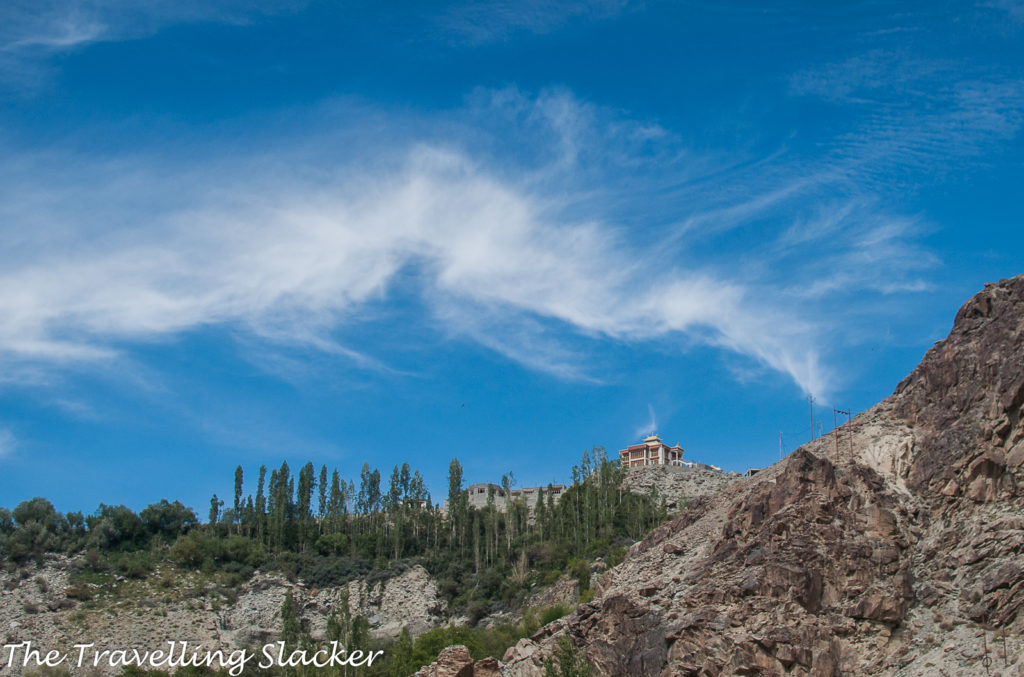
We slowly reached Biama. I could see a shiny monastery far a top the hill. Many Brokpas are now Buddhists but they have maintained their own traditions a sculptures and have not been overpowered by more dominant cultures. As far as the village is concerned, it looked sleepy. In fact, some houses looked submerged in the river, which was a result of a flood a few years ago, as we were told by the locals. So, nowadays most constructions are seen higher up the hills. To behonest, after Dah, Biama did not seem as exciting. We had some food at a roadside restuarant, which was practically the only restaurant we saw in the area. After that, somehow we got lucky as Pierre’s old friend appeared from nowhere and spotted him. As it turned out, he was now living in Baldez, the pretty village on the other side of the river, across a hanging bridge. He invited us to his place.
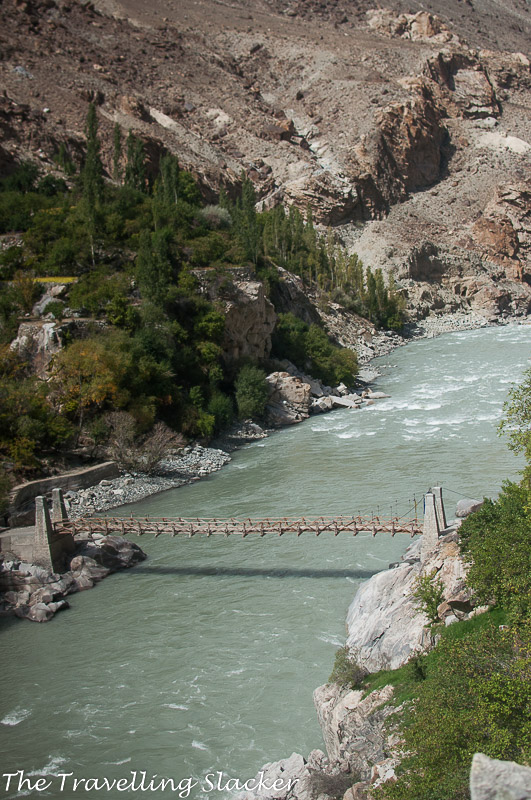
At Baldez
We crossed the bridge, entered the village, another one covered with apricots and walnut trees, and reached Londhup’s house, wehere is mother was also there. We were offered apricots, tea and biscuits and we started talking about their lives. It can get difficult but they seem to be doing well. His daughter is now studying somehwere in Delhi and he occassionally visits her. He used to run the homestay in Dah earlier. But now he is busy with his household work as his wife was not keeping well. Agriculture and husbandry seemed to take a lot of his time.


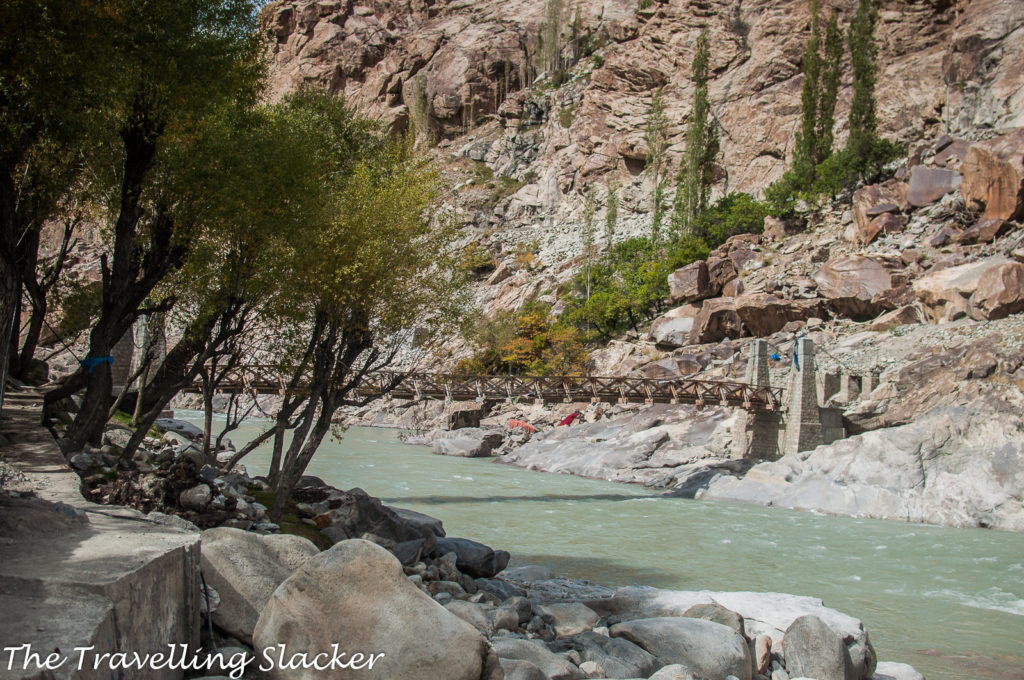
After meeting Lhondup, and filling our pockets with apricots and walnuts that he generously offered, we started walking back towards Dah. I wanted to chek out the other route from the front, so I left my French companions to take the shortcut and walked ahead. AFter a while, I reached a checkpost. The road goes ahead all the way towards Batalik and Kargil but a sharp U-turn climbed higher up towards the village. This stretch was actuall more beautiful although I could not do justice to it in the fading light. A stream was flowing down towards the Indus and autum colours were ruling the banks.
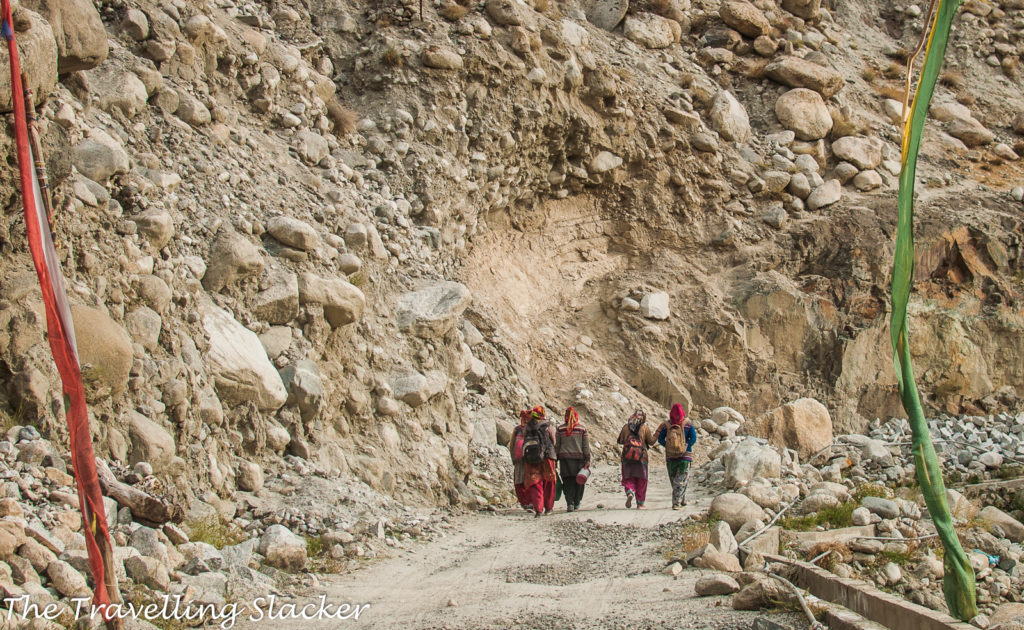
The road bifurcates at one point and so I was a bit confused. A truck came from behind and stopped. Several local women came out. Apparently they work somewhere nearby and were returning home. So, I followed them and finally reached the village. The visit to Dah Village was more or less over at this point and I was supposed to return the next day. However, I was not happy. The travelogue was not going to look complete without a clear portrait of a Brokpa in traditional attire and so far I’d had none! But this was also sorted out by the time I reached my homestay. There was an old lady, complete with that floral headgear, and she agreed for a photograph immediately!

Also Read
For details of travelling and exploring the Brokpa region, read my Aryan Valley Guide.

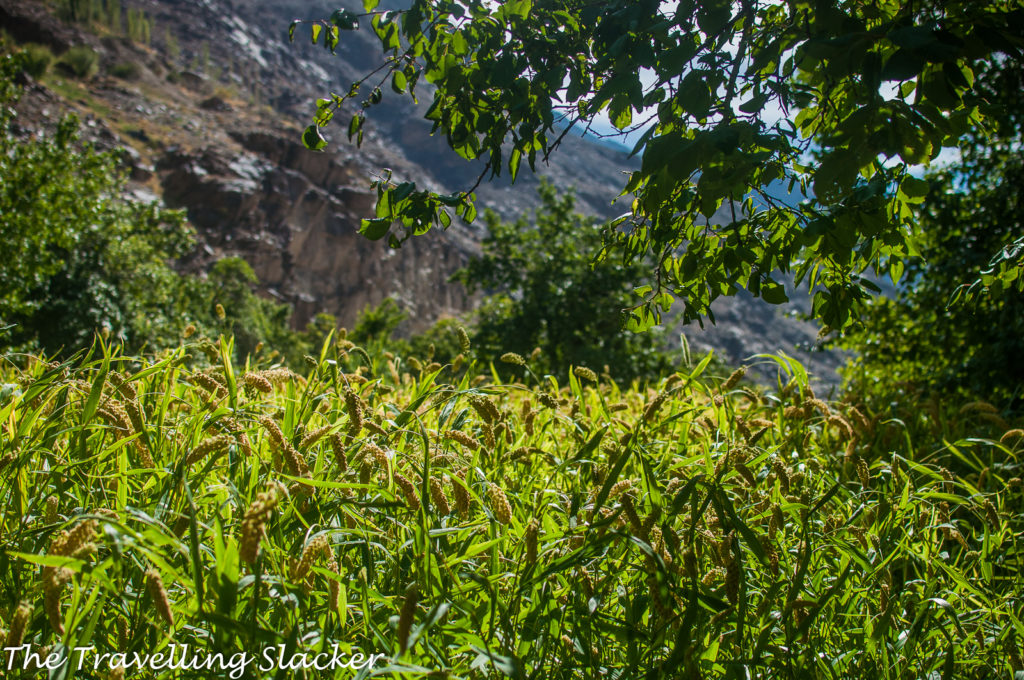
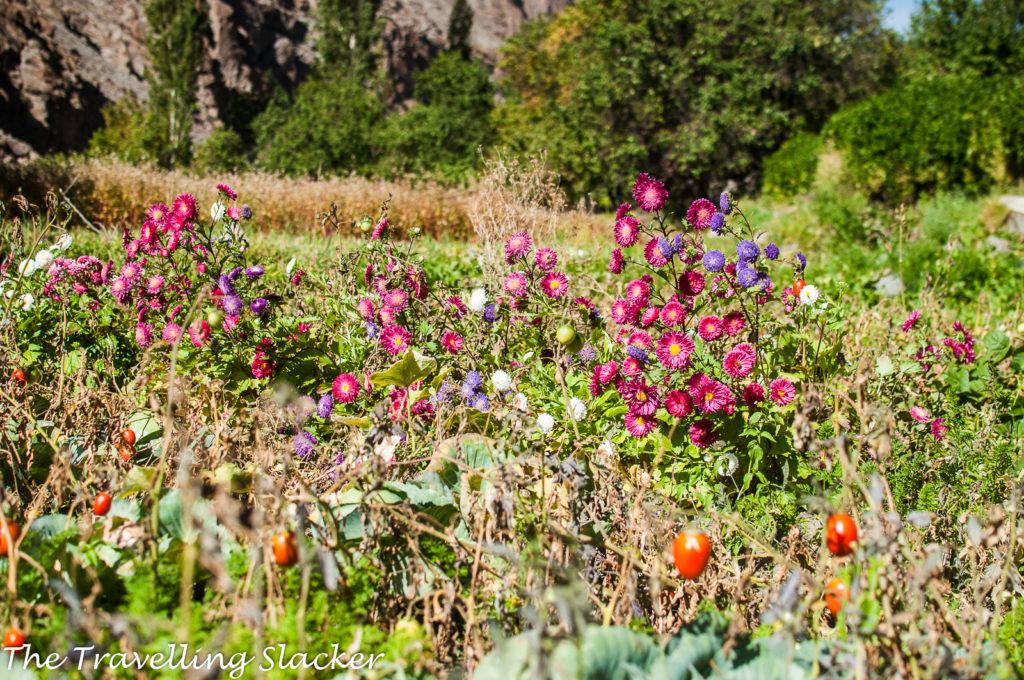
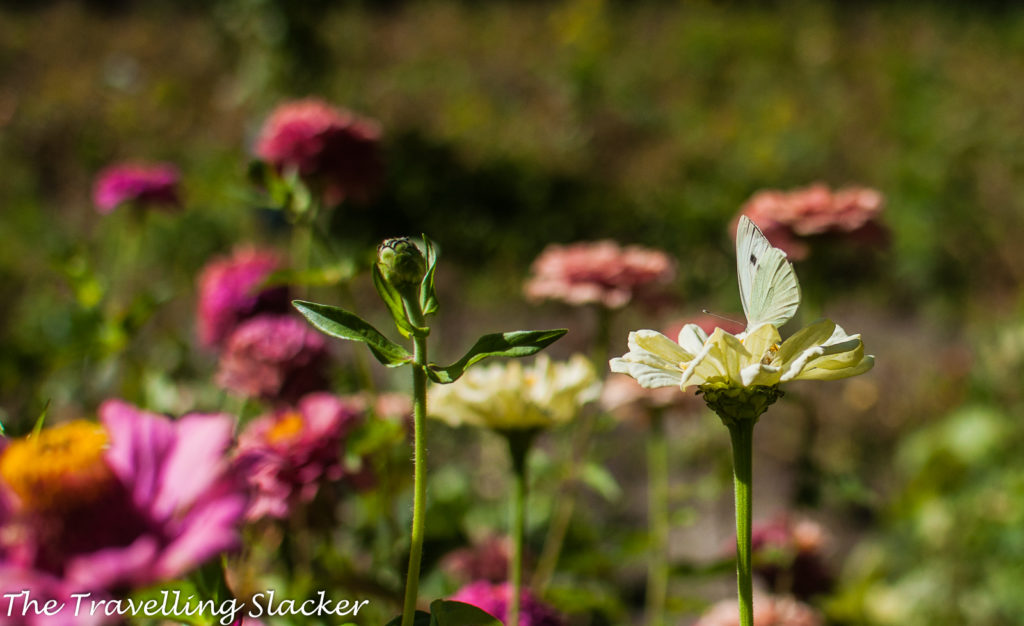
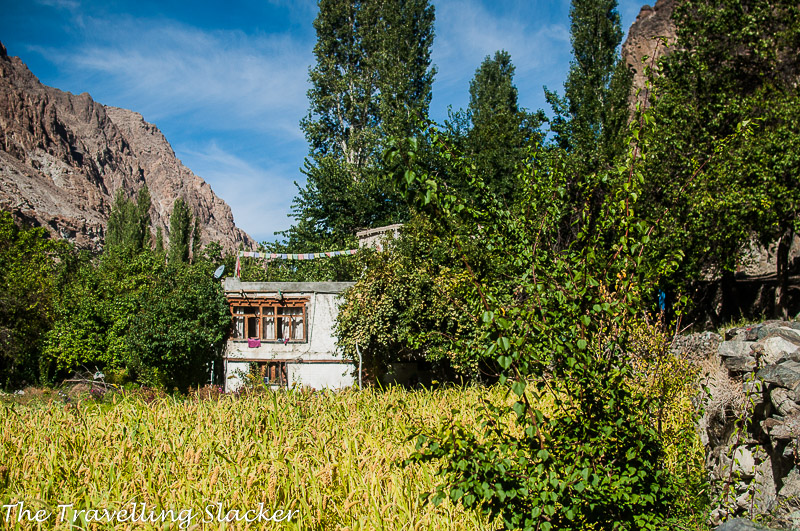

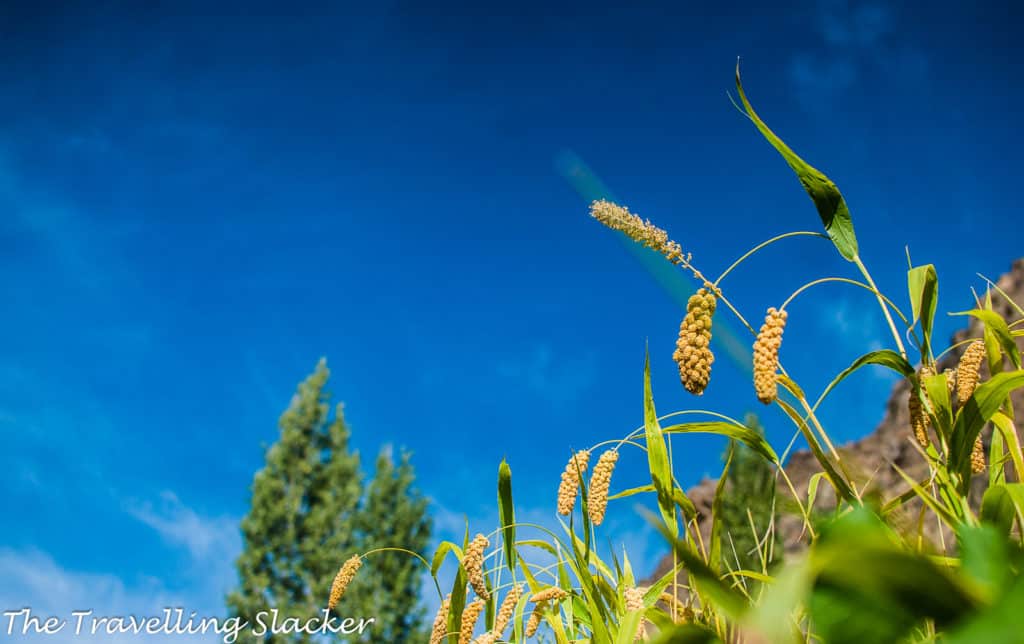
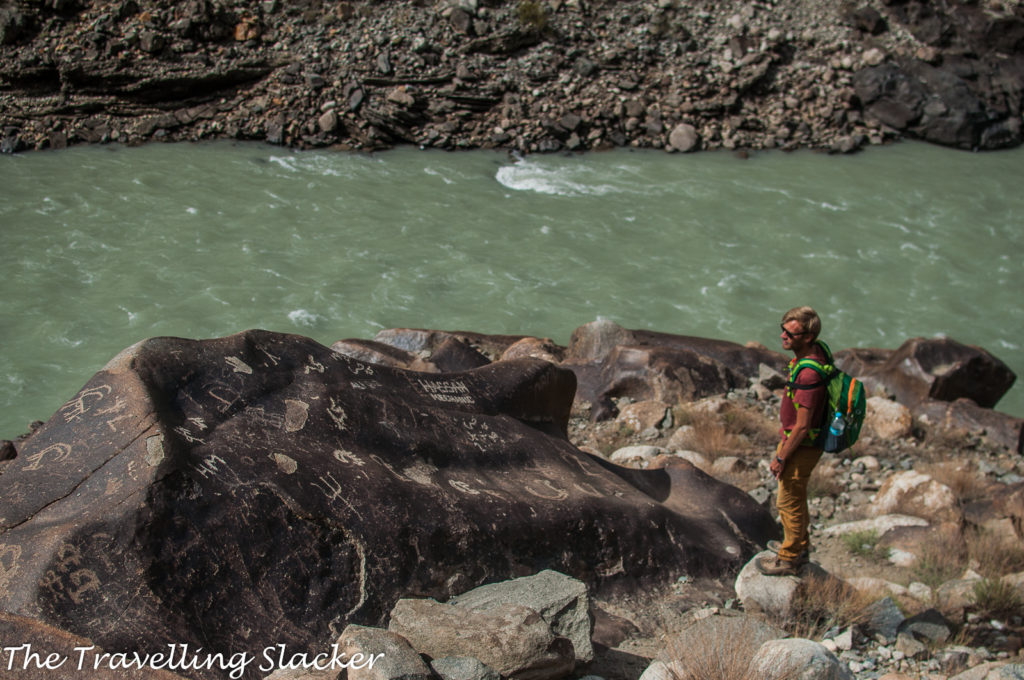

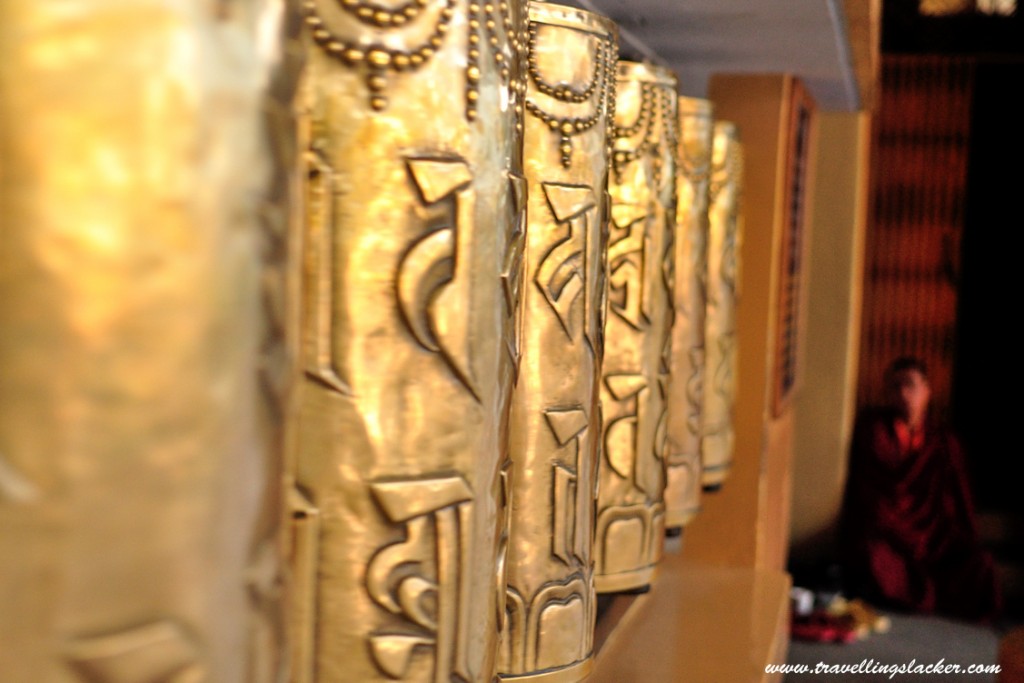
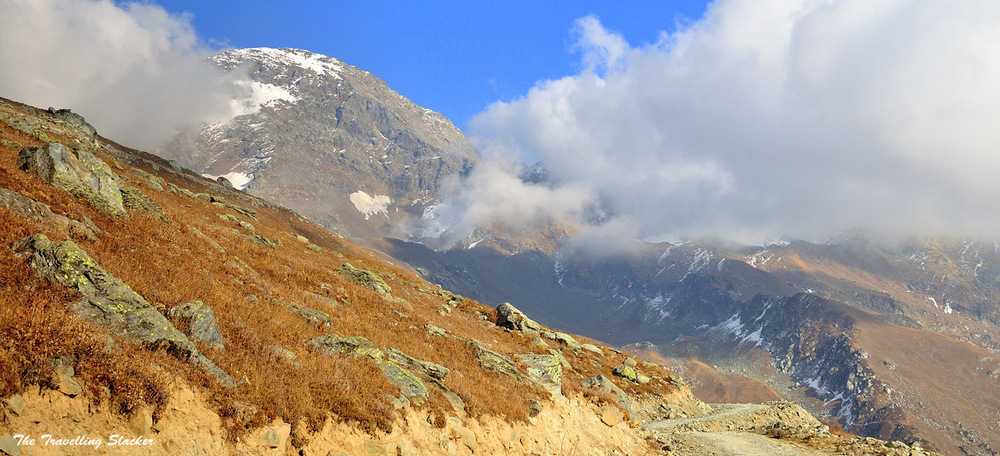

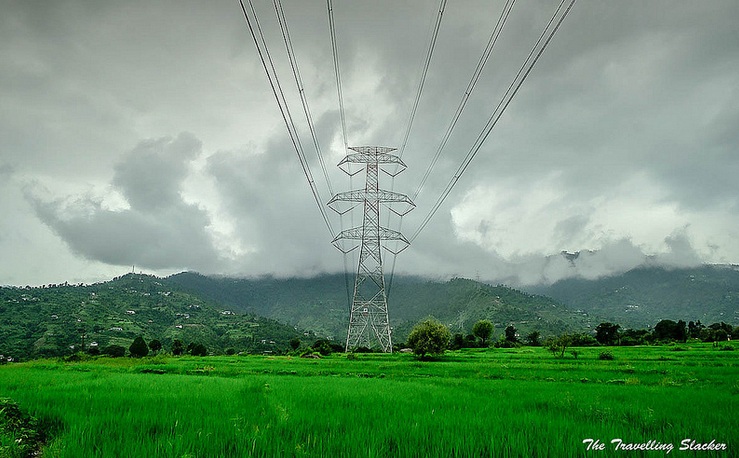
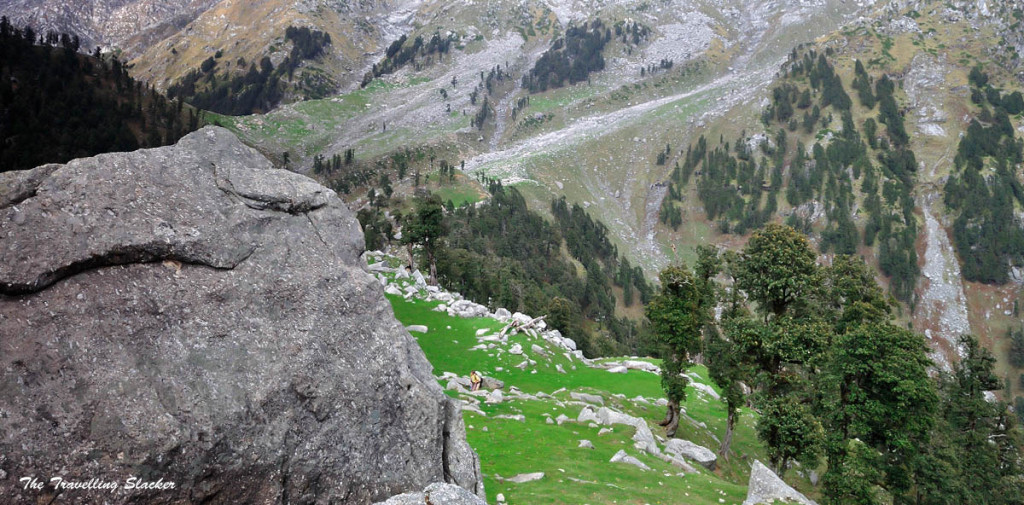
I will go here.. Thanks!
I’m glad I found this post, and I happen to be in India right now! What a beautiful place, it looks so quiet and peaceful and serene. I love the petroglyphs and the flowers! Where can you stay there and how long would you recommend visiting for?
How great to visit when the fields were all in bloom. The flowers in the vegetable fields look beautiful. It is great that there are several different spots to learn about the Dard heritage. Nice to meet a local who could take you to Baldez. And a homemade meal too! Sounds like a great day.
Its rare that one gets to read posts about areas in Ladakh other than Leh, Nubra and Pangong. It seems to be such a pure and simple life these people are leading there. The trip must have been very refreshing.
These are some beautiful hidden from world. The head gear with flowers is amazing. What a lovely culture!
What an intriguing story and culture. The Brokpa lady is so lovely and that floral headpiece is amazing! Thanks so much for sharing this part of the world with us. Any chance it may become a UNESCO World Heritage Site? Seems fitting for such an exquisite area.
I have never heard of Brokpa village before. Wow, I like the headgear with flowers. It is so pretty. I want one.
I have been to Ladakh but cannot quite place the names of the villages you mention – Dah looks pretty amazing and homestay in a place like this has to be a great idea! I love the landscapes of Ladakh and even Baldez village looks great. What a lovely way to immerse yourself in nature and culture at the same time.
Dah Village looks like it has a rich culture and the people seem to lead tranquil lives. A homestay would be a fantastic way to learn more about their culture.
Really nice blog and beautiful pictures would love to visit that places once.